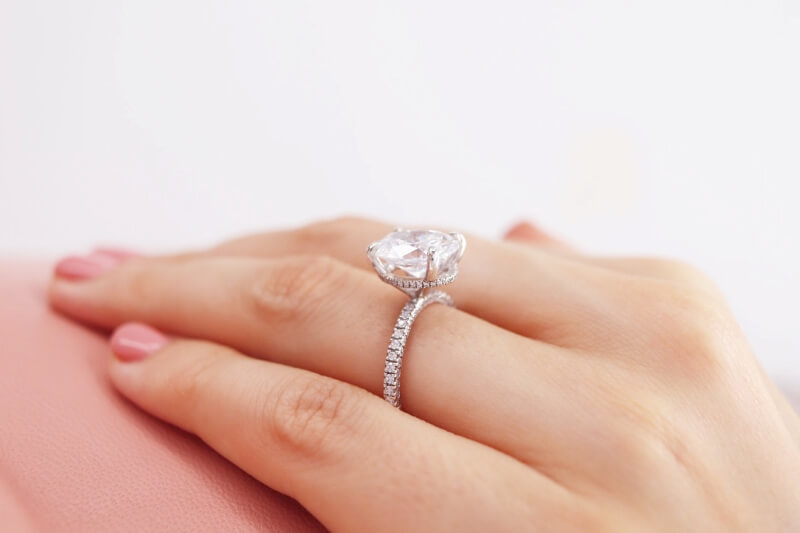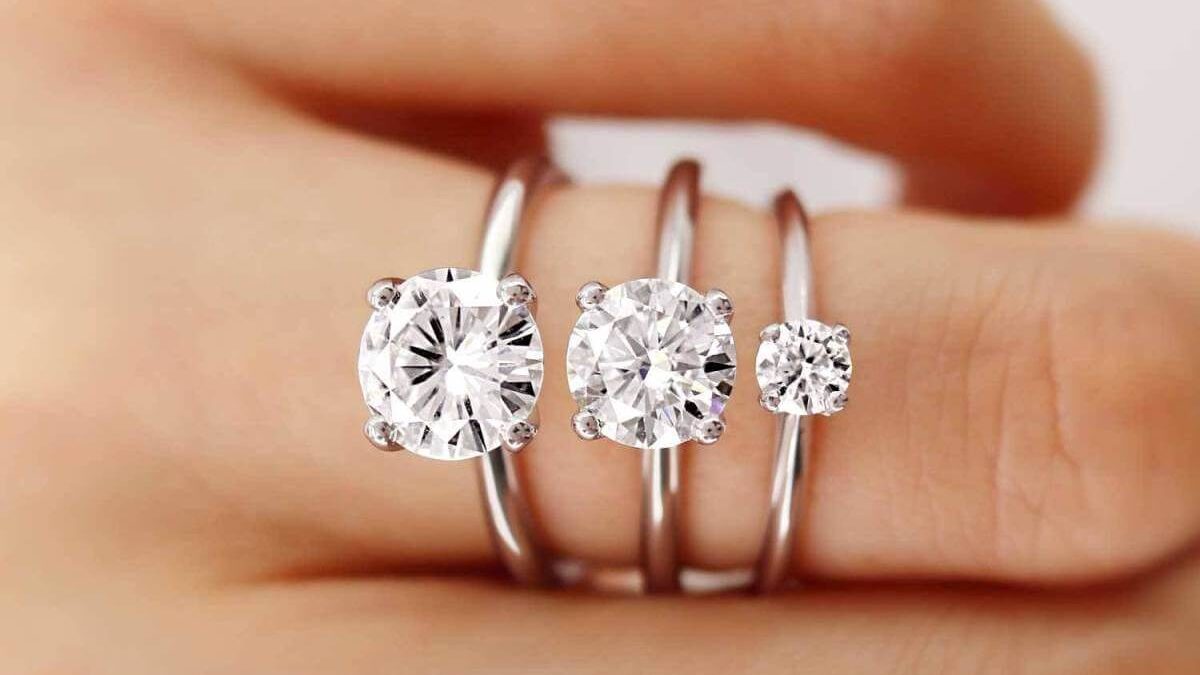Moissanite has become a super popular gemstone choice for couples that are budget conscious and seeking to keep the cost down. If you are looking for a white gemstone and a diamond is slightly out of budget then moissanite could be perfect for you as it has very similar optical properties as a diamond. So if you want a bigger rock for your buck without compromising on the quality of your ring, then you should definitely be considering moissanite!
Moissanite engagement rings are one of the leading mined diamond alternatives, making it possible to have a luxurious engagement ring of your choice at an affordable price point. Today we have the experts from Lily Arkwright here to give us a comprehensive guide to moissanite and why it’s a brilliant alternative for ethical engagement rings.
So what exactly is moissanite?
Moissanite gems are chemically made up of silicone carbide, which is a material that can occur naturally but is far rarer than diamonds, as it only occurs in very small quantities. It was first discovered in a meteorite in Arizona, United States by acclaimed Nobel prize winner doctor Henri Moissan in 1893. Moissanite is quite literally born in the stars! It wasn’t until over a hundred years later when scientists successfully recreated a moissanite laboratory growing process, and shortly after Charles and Colvard produced the first commercial quality lab grown moissanite gemstones.
Also Read: Why is Antique Jewellery A Great Choice?
Charles & Colvard being some of the first laboratory technicians recreate the natural conditions and pressures needed for moissanite to form naturally to create a physically identical gemstone to that of a naturally occurring moissanite. It takes around three months for a scientist to meticulously create a single lab grown moissanite. Nowadays almost all moissanite is grown in a lab and manufactured, making it easily affordable to consumers.
Why should you opt for moissanite?

The appearance of moissanite in comparison to diamonds is strikingly similar. To the untrained observer, there’s generally no difference in terms of how that moissanite engagement ring looks on the hand when compared to its diamond counterpart, whether that be lab diamond or mined diamond. Moissanite is brilliantly sparkly due to it having a slightly higher refractive index than a diamond. The refractive index of a mineral refers to the speed at which light can travel through it. That’s why moissanite is a wonderful alternative as a colourless stone, and due to these visual properties it displays a remarkable fiery brilliance.
Another major benefit of moissanite is that it does not have the same ethical and sustainable risk and complications as mined diamonds. Unfortunately, due to the nature of mined diamonds there can sometimes be a community cost involved. The impact on the planet is also dramatically reduced when choosing a moissanite stone over a mined diamond because mining can cause a reduction in biodiversity, ecosystem damage and soil erosion. As moissanite is produced in a lab the need for mining is completely eliminated, cutting out these harmful practices.
If you are budget conscious or simply want a larger carat weight for your money, moissanite is perfect as it equates to roughly 90% cheaper than your conventional mined diamond. The reason for the reduction in price is due to a smaller production chain and timescale, less people are involved in the production of lab diamonds. In comparison to mined diamonds, the same size moissanite stone is dramatically lower in cost and this price can fluctuate depending on size, cut and quality.
Also Read: Wearing a Luxury Watch is an Amazing Thing
Moissanite is amazingly durable! As moissanite is partly made up of carbon similar to diamonds and moissanite has a score of 9.25 on the mohs scale of hardness. It is the second hardest gemstone on the planet, making it a perfect option for engagement rings designed to last a lifetime.
Final Thoughts
If the idea of lab diamond or moissanite jewellery has sparked your interest or you would like to find out more information about Lily Arkwright and their lab grown collections simply call them on: 0161 537 6773, or alternatively you can email their jewellery consultancy team at: hello@lilyarkwright.com or book an in-person consultation.


Stay connected